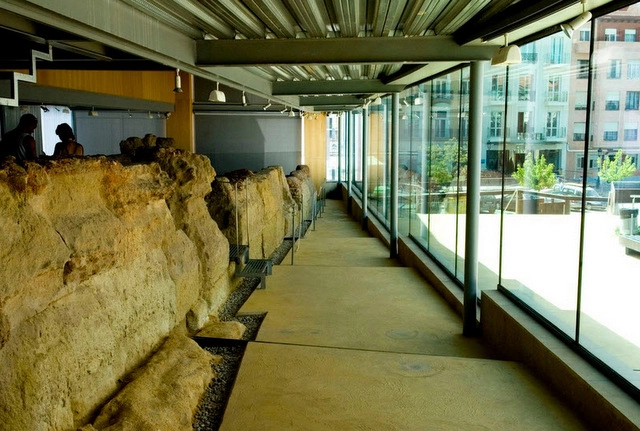The Punic Wall Interpretation Centre in Cartagena
Remains of the 2,200-year-old Carthaginian "Muralla Púnica" which failed to protect the city from the Romans
This centre contains part of the remains of the original wall which encircled the city during the period immediately before the Romans occupied the city of Cartagena as well as a crypt which dates from nearly 1,800 years later, and is dedicated primarily to the Carthaginian or Punic period of the history of Cartagena.
Many people are understandably a little overwhelmed by the variety of cultures which have occupied the city now known as Cartagena for the last three millennia, but the word “Punic” can be taken to be a near exact synonym for “Carthaginian”, describing the empire in the western Mediterranean which was based in Carthage (on the coast of what is now Tunisia). In turn, Carthage was initially a dependency of the Phoenician state of Tyre (in the Lebanon) before gaining independence in around 650 BC, and the Carthaginian civilization spread to include what is now Cartagena for a brief period of only 20 years in the third century BC before being ousted by the forces of the Roman general Scipio.
The word “Punic” is often preferred when describing remains and artefacts in Cartagena as the word “Carthaginian” can be used to refer to anything originating from the city, rather than from this particular period over 2,200 years ago.
The Phoenicians and the Carthaginians
Over 1,000 years before the birth of Christ seafaring trading routes ran right along the Mediterranean and African coasts, forming a huge, U-shaped basin on the map along which commodities were traded. The group of traders whose roots lay in modern-day Lebanon were great seafarers and established colonies and outposts in many places, working the shipping routes, becoming rich and powerful in the process and dominating the Mediterranean.
They were active all along the Spanish Mediterranean coastline, trading raw minerals, luxury goods, dyes made from seashells, ceramics, glass and fish products and working in collaboration with the native population, most of them descended from Iberian tribes. So wide was their field of influence that there are even traces of their activities in Cornwall, where they are known to have traded in Cornish tin.
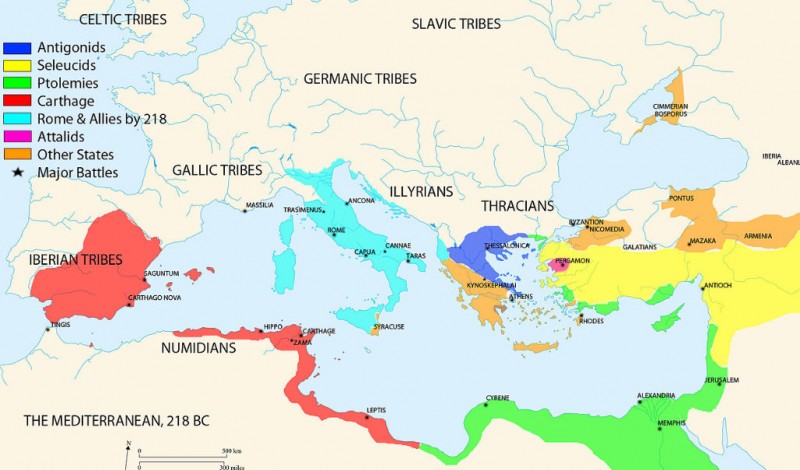
These were the Phoenicians (Punics), and over the centuries a series of power struggles pushed many of them out of their homelands to other locations along the Mediterranean coast. They established many settlements including the great city of Carthage.
In the Region of Murcia they left behind an amazing legacy including three shipwrecked vessels (two in Puerto de Mazarrón and one close to La Manga in the municipality of San Javier) dating from approximately 600 BC as well as many artefacts on land, discovered in numerous archaeological excavations. Many of these can be seen in the ARQUA underwater archaeology museum in Cartagena along with a replica of one of the two Phoenician boats discovered in Puerto de Mazarrón.
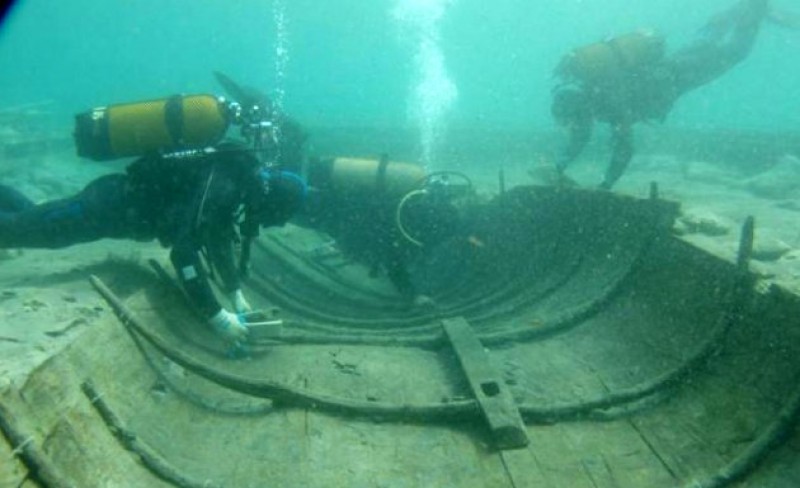
Gradually the Carthaginians ceased to be “genuine” Phoenicians and dominated the trade routes themselves for many years, until around 350 BC. At that point the Romans sought to take full control of the Mediterranean and this eventually brought about the three "Punic Wars", in which the two civilizations battled for control. The first Punic War between 264 and 241 BC saw the Carthaginians forced out of their Italian and French bases, including Sicily, and they were pushed further south and west towards Spain and northern Africa.
In the years after that conflict a partial conquest of the Iberian coast was undertaken by the Carthaginians under the leadership of the Barca family. At the head of this dynasty was Hamilcar Barca, who negotiated a settlement whereby the Carthaginians would effectively take control of the trading settlement in what is now Cartagena and "defend it from the Romans" in return for co-operation and continued trade; they were thus allowed to move in en masse, fortifying the Iberian settlement and re-naming it “Qart-Hadast” (or new Carthage).
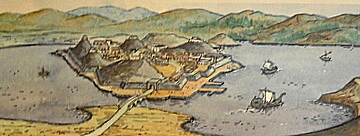
Among the fortifications erected are the defensive walls around the city, which was then on an isthmus of land and was thus already protected to a certain degree by the water which surrounded it except where it joined the mainland to the east. The walls, added to the five hills inside them, led to Qart-Hadast being a very difficult city to attack, and it almost immediately became the administrative and political capital of Carthaginian interests in the Iberian Peninsula.
Not only was Qart-Hadast used as a weapons arsenal, a military base and to store supplies of all kinds, the nearby silver and lead mines provided a source of wealth, the esparto grass in the area was used for textile and shipping goods and the salt flats provided salt for food treatment and preservation.
Hamilcar Barca was assisted in his conquest of parts of Spain by his son-in-law Hasdrubal, and his work was later carried on by his legendary son Hannibal. Hannibal lived in Qart-Hadast and was an ambitious enemy of the Roman Empire, famously launching a march in 218 BC to first attack Saguntum (30 kilometres north of Valencia) and then advance towards Rome itself with his army and elephants enabling him to cross the Alps. This marked the beginning of the Second Punic War, and Hannibal’s departure from Qart-Hadast is played out every September as part of the annual Carthagineses y Romanos fiestas.
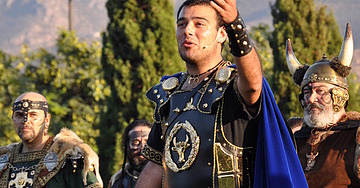
However, the Second Punic War ended in 201 BC after further defeats for the Carthaginians, including the loss of Qart-Hadast in 209 BC. The population of the city was slaughtered in order to spread terror although Iberian slaves were spared, and practically all that remained of Carthage, apart from its cultural and commercial legacy, was the city walls.
(Click here for more information regarding this period in the history of Cartagena.)
Visiting the Muralla Púnica interpretation centre
The Muralla Púnica interpretation centre includes a part of these walls near to the original main entrance of 2,200 years ago, clearly showing both inner and outer structures which are viewed from above: this is a rare finding as the remains of very few Carthaginian structures have been excavated in the Iberian Peninsula.
Between the two walls were casemates which housed troops and weapons, and on top heavy wooden beams supported a roof of adobe and vegetation. Only 30 metres of the walls have been uncovered, although at one point the structure reaches a height of 3 metres, and it is to be supposed that they would have been covered in white plaster to protect the sandstone from the elements and to make it appear more imposing.
Each sandstone block measures approximately 125 centimetres in length, 60 cm in height and 75 cm in thickness.
On entry the visitor is offered an audiovisual presentation resuming this period in the history of Cartagena and then reaches a series of display boards and a children's games area.
Down below, the walls and a series of display cases housing artefacts recovered by archaeologists can be seen from this period, and in addition a flight of steps leads down to the crypt of the old church of San José, which stood here from the 16th to the 19th century. Parts of the mortal remains of residents of the old parish still lie here, and a macabre representation of the dance of death is painted on the wall!
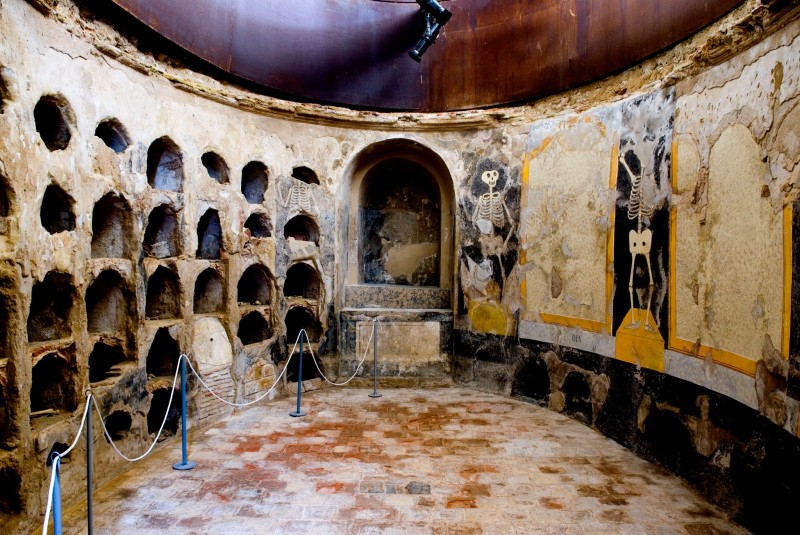
As with so much of the historical heritage of Cartagena, it was not until relatively recently that this part of the Punic Wall was discovered: along with the crypt of San José it was found during the construction of an underground car park in 1987. The plans to create a museum over and around them were not finalized until 2003.
Opening Times
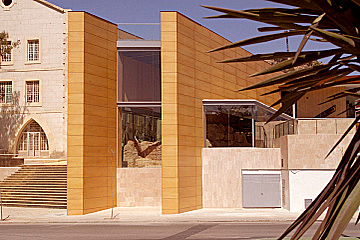
High season (1st July to 15th September): Every day of the week from 10.00 to 20.00.
Mid season (15th March to 30th June and 16th September to 1st November): Tuesday to Sunday 10.00 to 19.00, except during Semana Santa when the museum opens on Monday as well.
Low season (2nd November to 14th March): Tuesday to Sunday 10.00 to 17.30.
The museum closes on the holidays of 1st and 6th January and 25th December and opens only in the afternoons on the days preceding them.
30-minute guided tours are offered at 11.00, 12.00 and 17.30 during high and mid-season and at 11.00 and 16.00 in the low season (in Spanish).
There is a small selection of gifts and souvenirs on sale.
Admission prices

Standard 3.50 euros
Reduced fee 2.50 euros (under 12s, pensioners, students up to the age of 25, unemployed, disabled, large families, groups of 20 or more)
Children aged 3 or under are admitted free of charge.
Audioguides
Audio guides are available at a cost of 2.50 euros and can be used to complete your visit in the order you like and taking as much time as you like. The guides are supplied in Spanish, English, French and Russian.
How to get there
The Muralla Púnica interpretation centre is at Calle San Diego nº 25, very close to the bus and railway stations in Cartagena and just a short walk from the seafront. The nearest public car park is just 100 metres away in Avenida de América, the road which leads down to the railway station.
The location is at the foot of the hill of San José, one of the five which dominated the skyline in Qart-Hadast, which was known by the Romans as Mons Aletes.
Accessibility and services
In addition, the following services are on offer at the museum for those with disabilities and impairments:
Ramps and glass floors have been installed to ensure easy access and full visibility of the remains which lie beneath the upper floor.
Adapted toilets.
Audio-visuals with sub-titles in English and Spanish and oral commentary in Spanish for people with visual and hearing disabilities. Information boards in dual English-Spanish language.
Reduced admission fees for the disabled (see above).
Guide dogs are admitted with the corresponding accreditation.
For full information in English about the Cartagena municipality CLICK HERE
For full information about places to visit in Cartagena city CLICK HERE






